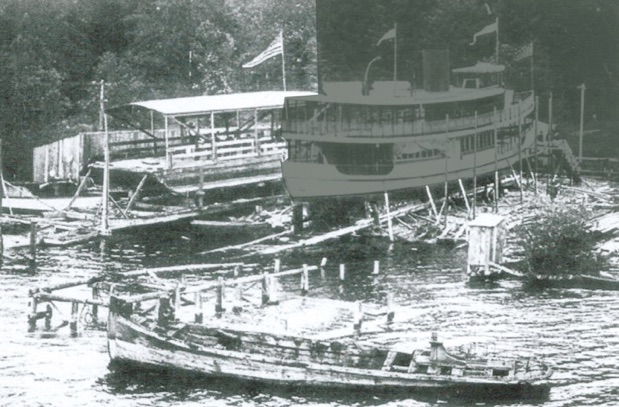Seattle Tennis Club
Wrecks

Seattle Tennis Club
Wrecks

Barge / Scow history
Barges as we know them were derived from what is called a scow.

There were varieties to scows; barks, schooners, sloops, or just unrigged but they always kept to the tradition of the squared out bow. The scow was usually flat bottomed, flat sided, and often, in addition to being flat bowed, flat sterned and used to haul freight. These box like vessels were very pragmatically designed to serve the ports, rivers, bays, piers, and shores of Lake Washington. It was assumed that these great scows and barges made their appearances as early as the 1850’s to haul coal on the lake for Dr. R.H. Bigelow’s claim on the Black River.

Barges of the 19th century were developed after the advent of steamboats allowing them to be towed easily around the lake. The sailing scow was on its way to becoming obsolete in the water commerce arena but the basic square hull design would continue to be used in the form of unrigged barges. Barges with their deeper draft transported heavy freight on lakes and deep rivers, as well as larger waterways. Later, when more settlers arrived to the area around Lake Washington to develop the timber industry, barges would be used to carry the lumber from the lake to awaiting trains for export.

The most common barge design had the typical square-ended hull at the bow and stern, built of planks and often used as work platforms, or coal and lumber transports. Some barges and scows were often used as floating storage, or ferry transportation on the lake. Some of the larger barges used for storage were called wharf boats, and even some were used as houseboats.

The “tow-barge” or consort system of shipping that developed during the Civil War (1860’s) involved the steamer to propel the barge or barges along the waterway moving in tandem from port to port. The benefit of this system was the towing steamer could increase its total cargo moved with little increase in fuel consumption.
There are probably hundreds of these scows and barges, big and small, littered along Lake Washington's depths. It was far easier and cheaper to sink them than to dismantle them.

The barge in the background and the Gazelle in the foreground may NOT be the wrecks described and shown here, but do look a lot like them.


-Home